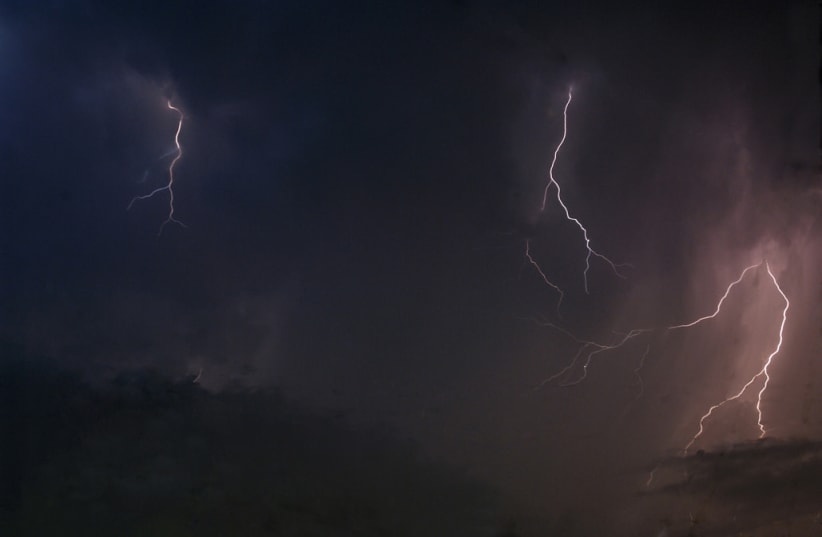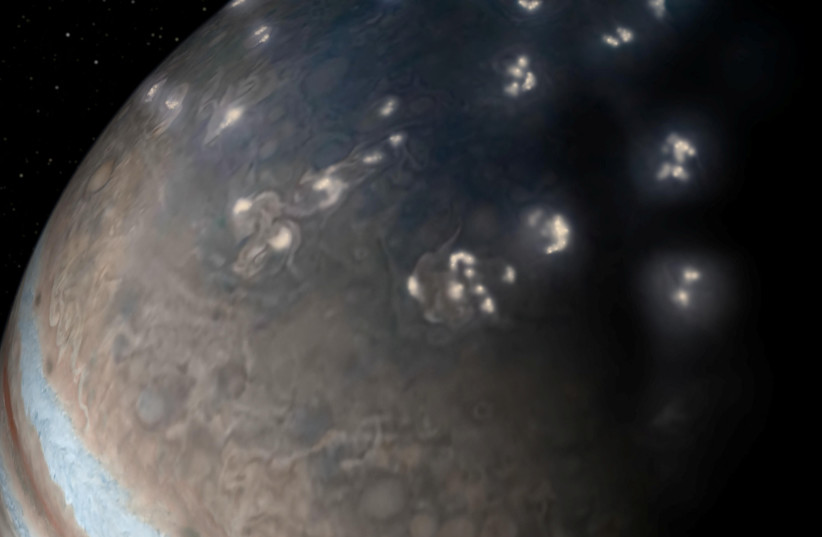Until recently, lightning was extremely rare in the Arctic region of the North Pole due to the intense cold.
Lightning storms are formed when the surface of the ground heats up, and pockets of air rise up in the atmosphere, where they cool, condense and become clouds that sometimes develop into thunderstorms.
But due to the warming of the Earth and the polar regions, lightning storms have recently started appearing there in the summer months when the sun does not set at all, heating the surface – and these storms further accelerate the process of melting the ice sheets, in a feedback loop, according to an international study that included researchers at Tel Aviv University.
The team members, who have just published their findings in the journal Atmospheric Research under the title “Are thunderstorms linked to the rapid Sea ice loss in the Arctic?” found that in addition to the general warming of the globe, lightning storms have been directly hastening the ongoing process of sea ice retreat covering the Arctic Ocean.
Prof. Colin Price and master’s degree student Tair Plotnik from the geophysics department at TAU’s Porter School of the Environment and Earth Sciences participated in the study, alongside Dr. Anirban Guha and Dr. Joydeb Saha from India’s Tripura University.
“The Arctic region is defined as the region located north of the 66.5° latitude. In the heart of this region, around the North Pole, there is no land, and due to the extreme cold conditions, the sea is covered with a thick layer of sea ice, which currently extends over about eight million square kilometers,” Price noted.
“The white ice reflects the sun’s rays, and thus contributes to the cooling of the Earth, but in recent decades, with the warming of the Earth, the ice cover has retreated at a rate of about 70,000 square kilometers per year, or 6.5% per decade,” he said.
Temperatures rising in the Arctic
The temperature at the North Pole has been rising at an accelerating pace – “about 4° until today, in contrast to about 1° on Earth as a whole,” Price said.
“The retreat of the ice increases the warming even further, because the dark areas of the ocean under the ice, which are getting bigger and bigger, absorb the sun’s rays that would normally be reflected back to space,” he said. “This is how a feedback loop is created: the retreat of the ice increases the warming, which in turn increases the melting of the ice, and the cycle repeats.”
ACCORDING TO the researchers, the phenomenon of melting ice sheets at both poles is primarily attributed to the result of human activity, due to the increase in the amount of greenhouse gases in the atmosphere, creating a kind of “blanket” that preserves the heat and doesn’t allow it to disperse into space.
But studies have not found a direct correlation between the greenhouse-gas changes that increase at a more-or-less constant rate every year and the rate of sea ice melting, which varies greatly from year to year. The new study aimed at examining the possible effect of another factor – lightning storms – on the melting of the sea ice in the Arctic region.
To test their hypothesis that lightning storms contribute to the melting of the ice around the North Pole, the researchers compared two sets of data – images from NASA satellites that have been documenting the retreat of the ice in the Arctic Sea for more than 40 years, and lightning data collected by the global World Wide Lightning Location Network (WWLLN – pronounced “woolen”). This network includes around 70 lightning-detection stations, deployed in research institutions all over the world – one of which stands on the roof of TAU’s Faculty of Exact Sciences building.
Price explained that lightning is the result of a massive electric field that is discharged at once and transmits radio waves that can be received even thousands of kilometers away.
“The global network’s sensors detect and map thunderstorms anywhere on the planet, in real time and non-stop. Cross-referencing the information from the various stations allows for an accurate determination of the location and time of each lightning strike detected, and thus a global map of lightning over time is obtained” he said. “For this study, we collected data on lightning in the Arctic region during the summer months of June, July and August every year since 2010.”
A STATISTICAL analysis of the ice sheet retreat crossed with the number of lightning storms revealed a correlation: as the number of storms increased in a certain year, so did the melting of the sea ice increase that year. The researchers explain this by comparing thunderstorms to a giant vacuum cleaner, sucking water vapor up from the surface layer to the upper atmosphere (five to 10 km. upwards), where it accumulates and acts like an additional blanket, trapping the surface heat from leaving, and increasing the surface temperature – just like the man-made greenhouse gases.
Another possibility, observed in a previous study, is that these same lightning storms lead to an increase in the formation of high cirrus clouds in the upper layers of the atmosphere – which also form a similar “blanket.”
Price concluded that “in our research, we found a clear statistical relationship between the number of lightning storms in the Arctic region in a certain year and the rate of sea ice melting in that year. This means that the storms are another factor that increases the melting of the polar ice, producing a feedback loop: the initial melting of the ice increases the dark surface areas of the sea, which absorb more of the sun’s rays, warming up the waters, causing more melting, accelerating the rate of warming, which in turn increases the amount of lightning storms, and the cycle repeats itself.
“As a result of this, and of the warming of the Earth in general,” Price said, “we expect that the frequency of lightning storms in the Arctic region will increase in the coming years, and with it the rate of sea ice retreat in the Arctic Sea will accelerate.”

